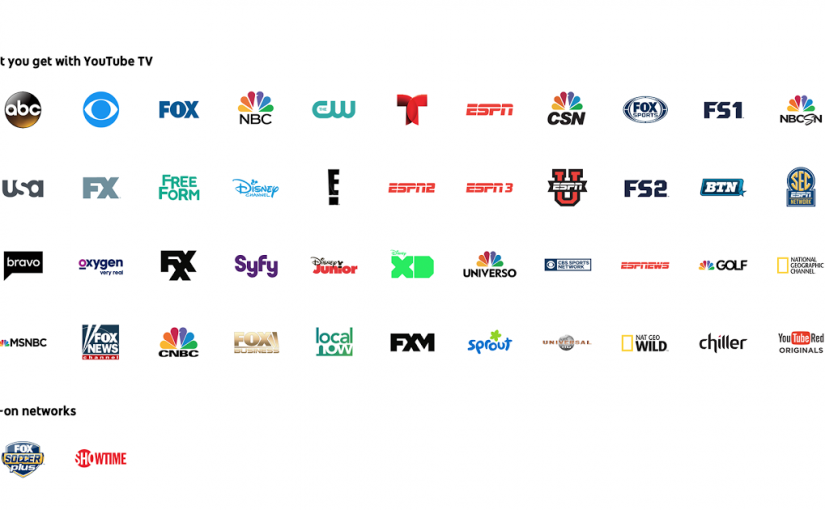When Microsoft revealed the Xbox One in 2013, it was to the fanfare of TV and sports, with a smattering of Call of Duty at the end. It was utterly ridiculed for that “sin” and has not recovered since. Yet, in the intermediary period we have seen the rise of Netflix, Amazon and Hulu Originals. YouTube has launched Red, a subscription service for YouTube content, and TV, a subscription service for plain old television. Apple is throwing its hat in the rink as well, hiring and producing originals for iTunes. Why are these companies obsessed with TV, rather than what we thought they did well?
Before we go any further, let’s acknowledge the elephant in the room. TV is big business, no matter how we capitalise it. Global TV advertising is estimated at around $200 billion, although that appears to only include actual linear TV ads and not online VOD services. In the USA alone, TV subscriptions account for $100 billion in revenue (this is money consumers directly pay). These are big numbers, and getting even a 5% slice is a big deal, even for Apple’s revenues. So the fact that they are looking is not odd.
But why the originals? Why is Netflix actively reducing its library size, when this is the opposite of what’s useful for users. As users of streaming services, we would like to be able to watch whatever, and yet, despite the supposed worshipping of the altar of user experience, the process of watching something on VOD is increasingly becoming an excruciating affair of browsing multiple streaming services in turn before being able to hopefully watch something. It’s more agony than enjoyment.

To see where we are with streaming video, it is illustrative to look at how we got here in streaming music. Compared to video, streaming music has already reached nirvana of sorts. For $10 a month (or “equivalent” in other currencies), a subscriber to Spotify, Apple Music, or Amazon (where available) gets pretty much all the music one can possibly consume, with few exceptions. Consumers are happy, so everyone is happy, right?
Well, not so fast. First, there are plenty of examples of ridiculously low payments. One band posted a Spotify payout that listed a payment of about $4,600 for over a million streams of their song. In addition, Spotify itself posted a loss of $600 million in 2016, a staggering number that has essentially doubled over a two-year timeframe. Even just looking at their gross margin (that is, the revenue they get minus the costs they can’t avoid, such as licensing, but before paying employee salaries) is about 15.6%. To put it in perspective, Sears, the embattled US retail chain, has a gross margin of 21% in what is typically a cut-throat arena. AT&T’s is 54%. There’s not a lot of slack in music streaming.
Couple this with the fact that music received the streaming treatment before video, and we see that content owners are much more careful with how they license their video content. Instead of getting paid per stream, as with music, video rights holders typically sign limited term agreements. For example, an agreement could be that Netflix is allowed to stream Season 1 of Show Name Here, in the USA, during 2018, for a $1 million one-time payment. It doesn’t matter how many (or few) times the show is viewed, the cost is the same, and once the time is up, that’s that. Netflix’ financials are also public. No doubt, content owners look at their revenue and think, “for sure, we should be getting a higher percentage of that. Our content will now cost more”.
Equally natural is the opposite reaction from Netflix. If content is going to cost more, then they damned well have to ensure that they are getting their money’s worth. Niche content, appealing only to a small segment of their audience, might no longer be profitable. Likewise, long-tail content from the 80s may no longer find a sizeable enough audience to be kept on the service. So the library shrinks, and while most people are happy, some people will grow increasingly unhappy.
Enter Originals.

Originals offer streaming services an easy way out – to the degree that even Spotify is doing them. Originals are a one-time investment with little to no ongoing royalty payments. The pesky regional restrictions are gone, and so are the download restrictions, allowing Netflix to offer offline download for viewing during flights. Presumably, the reason they couldn’t offer it earlier was simply contractual. All of this is above and beyond the boilerplate reason: unique content driving subscribers.
Originals also, ironically, cater very much into the existing media business. It is no surprise that Netflix is drawing comparisons to HBO – it has been their stated goal for quite a while to emulate that model. This model, incidentally, has been alive and well for many a decade, with TV and Cable network jostling for viewers by trying to find a reason for people to tune in. Shows are produced by the same companies, same producers, same actors; the only thing that differs is the channel. This includes things like niche content.
That brings us to the last odd man out: YouTube. Of all the original content we have discussed so far, YouTube is the holder of the most diverse and original set of content: that of users and semi-professional producers. They have attempted to continue this with their Live service – angling for Twitch streamers – and monetise it with their Red service. In this fray, YouTube is launching YouTube TV. A seemingly “me-too” service, this is a calculated move to create a hole in the walled garden of TV entertainment.

The YouTube model is interesting because their game is different. For certain, they are banking on licensed content as a way to drive mass market eyeballs. The difference is in their long tail. Instead of licensing VOD long tail they put the YouTube content front and center next to professional content.
This has two benefits. First, it avoids the site swapping one would normally need to go from The Big Bang Theory to the Hydraulic Press Channel. Instead they are placed side by side as equals, and users can easily move back and forth between the two types of content. Second, it provides a far larger pool of long tail content, which may be attractive to users, and has negligible residual cost for YouTube as they pay content creators per stream.
Beyond the Original Content war, this is one of the battles to look out for. If YouTube succeeds, they will bring the TV market closer to the music market.



